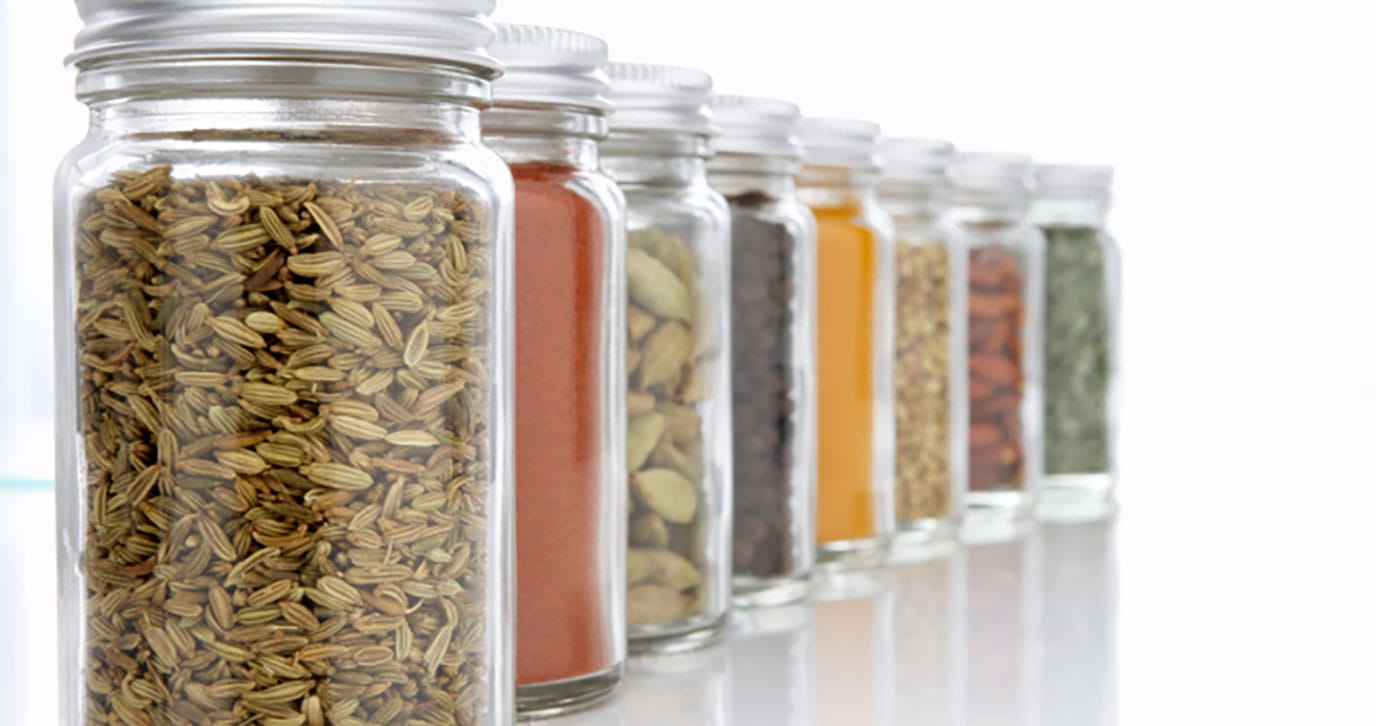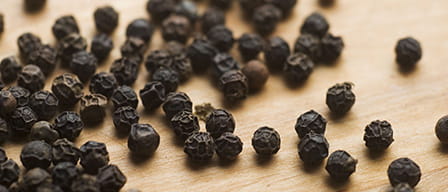
Anise



From a Euro-centric historical point of view, spices were rare and expensive ingredients from far away locations (such as black pepper from India). Spices fueled the global spice trade and played a large role in European colonialism. In contrast, many herbs are indigenous to the temperate climate of Europe and thus were not as rare and valuable. The international trade in spices was extremely lucrative, and civilizations arose around the spice trade throughout the Middle East, the Asian Silk Road to China, and in North Africa. Learn more about the history of spices.
|
Hot (Pungent) Spices: black and white peppers, mustard, red pepper |
Mild Flavored Spices: paprika, coriander |
|
Aromatic Spices: clove, cumin, dill seed, fennel seed, nutmeg, mace, cinnamon |
Aromatic Herbs and Vegetables: thyme, basil, bay leaf, marjoram, shallot, onion, garlic |
|
Part of the plant |
Spice/herb |
|
Leaves |
basil, bay leaf, chive, cilantro, lemon grass, marjoram, mint, oregano, parsley, rosemary, sage, savory, tarragon, thyme |
|
Bark |
cinnamon |
|
Seed |
cardamom, coriander, cumin, dill, fennel, fenugreek, nutmeg, mustard, poppy, sesame |
|
Flower/bud, pistil |
clove, lavender, saffron |
|
Fruits/berries |
allspice, black pepper, red pepper, paprika, vanilla, star anise |
|
Bulbs |
onion, garlic, leek |
|
Rhizome/root |
horseradish, ginger, turmeric, wasabi |
|
Aril |
mace |
Botanically, spices are named according to genus and species. For instance, for ginger: the genus name is Zingiber and family name is officinale, thus ginger’s botanical name is Zingiber officinale. Each spice also belongs to a larger family of plants. In ginger’s case, the family is Zingiberaceae. Turmeric (Curcuma longa) and cardamom (Elettaria cardamomum) are two other spices that belong to the family Zingiberaceae.

Anise

Basil

Bay Leaf

Black Pepper

Black Seed

Cardamom
